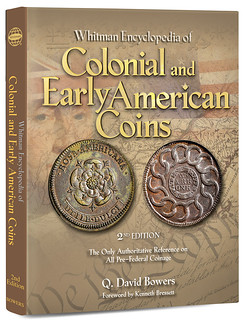
PREV ARTICLE
NEXT ARTICLE
FULL ISSUE
PREV FULL ISSUE
WHITMAN ENCYCLOPEDIA OF COLONIAL COINSThis overview of the Whitman Encyclopedia of Colonial and Early American Coins by Ken Bressett comes from the new edition's Foreword. Submitted by Dennis Tucker of Whitman Publishing. Thanks! -Editor
“Hardship, Heartbreak, and Opportunity”—The Fascinating Tales Told by Colonial and Early American Money
The second edition of the Whitman Encyclopedia of Colonial and Early American Coins debuted in September 2020. This essay is condensed from the book's foreword, by Kenneth Bressett.
Money that was used in early America was nothing at all like the coins, paper bills, and credit cards used today. It would have been as difficult for the original settlers to envision electronic transfers as it is for us to think about having to do without a standard monetary system, or the checks, coins, and currency we use to facilitate trade. For colonizers of a new land it was far more essential to journey with the essentials of life that must have included clothing, household goods, farm equipment, tools, and barter items. With no place to spend money, the early settlers in America were not overly concerned about bringing cash with them to their new home. Most of the early American settlers were farmers or small merchants looking for a better life. They had heard stories about rivers teeming with gold and precious gems, and while both they and the English government longed for immediate riches, their goal was mainly to ensure economic growth. The men hunted, built homes, and farmed, while the women cooked, made preserves, spun, and made clothing. Theirs was a self-sufficient society that relied on barter and needed little outside assistance or money. But that was not what the king of England hoped to achieve in the plantations that were intended more as a source of exports to the mother country. Early commerce in New England consisted of exchanging goods with the natives, by which valuable furs were obtained for export. In England they were used to acquire needed supplies and items that could not be produced locally. Beaver skins, wampum, imported trinkets, grain–and, in Virginia, tobacco–soon became the commonly accepted media of exchange for all other available commodities. The settlers had little use for coined money at first, but when traders came from foreign lands, coins were usually demanded in payment for goods. Coins that did occasionally come from England were immediately returned in payment for essential items from the homeland.
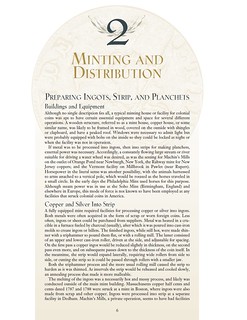
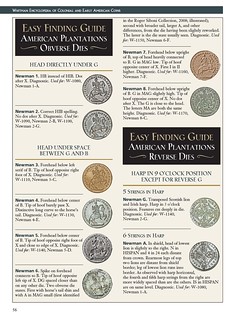
Gold and silver coins of all nations were accepted in normal dealings by the colonists who in turn used them to purchase imported goods. English copper and silver coins were familiar and desirable, but of equal value were the German thalers, Dutch silver lyon (lion) dollars and gold ducats, French louis, and, of course, the ever-present gold doubloons and silver pieces-of-eight and their fractions from Spain as well as mints from Mexico to South America. English copper coins served the need for small change, but even these were scarce and rarely adequate for commercial needs. In time, barter out of necessity became the prime medium of exchange within the colonies. Europeans were anxious to purchase fish and pelts from America, and the colonists were eager to accommodate them by bartering for those items with the Indians. Beads, knives, hatchets, and blankets were the favorite items. Trade with Europe was necessary and brought in powder, shot, guns, nails, and other provisions, thus adding to the shortage of coined money in the colonies. By and large, the colonization of British North America began and grew under the principles of mercantilism, a system whereby the colonies were expected to buy English finished goods and pay for them by sending locally abundant raw materials to England to supply her factories and stores. Colonial trade policy and England's mercantile system in general were governed by the English Board of Trade, which regulated commerce, raw materials, manufacturing, and shipping. Trade with any other country was discouraged in an effort to keep the colonies dependent on England. The British mercantile system required gold and silver to be used in England, and largely prevented the colonies from using anything but barter. As inhibiting as this was, the barter system at least served communities well for domestic needs, and the Americans even continued to exchange goods, services, and products well beyond the period of British control. From 1637 to 1661, Indian wampum became a standard medium of exchange for trade with the Native Americans. Wampum, basically strings of colored shell beads, was highly coveted and could be exchanged for furs. Six white beads or three blue beads equaled one English penny. All financial records were kept in the traditional English pounds, shillings, and pence, but debts and taxes were often paid in corn, beaver, or whatever foreign coins were available. The terms “country pay” and “corn” referred to a number of different kinds of grain or even peas, and all were accepted by some colonial treasuries for payment of taxes.
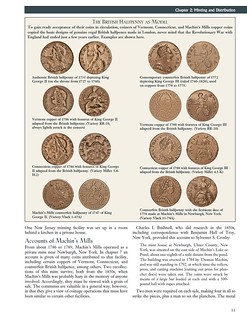
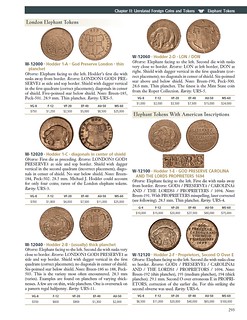
To a great extent, the saga of the American colonization effort is a story of the settlers' struggle to achieve a degree of economic sufficiency in defiance of unsympathetic British policies. Self-sufficiency, which could be better called “liberty,” meant the opportunity to market surplus produce at reasonable prices, and to use the income for necessities, or even an occasional luxury. This, however, was not the royal intent, and every possible obstacle was used to force a kind of restricted trade with England that would favor the Crown and leave the colonists with only the barest of necessities—and a continuing need to trade with the homeland. Coining money was considered a royal prerogative and was forbidden to the colonists. Some trade did go on with other foreign merchants, and small quantities of Spanish-American coins did circulate here, as well as other gold and silver pieces, but most local transactions had to rely on barter or trade without the use of coins. In time, just about anything that even looked like a coin was considered spendable. It was not until 1652, during the reign of Oliver Cromwell, three years after King Charles was removed from the throne, that coinage became an issue, and the Massachusetts Bay Colony faced the issue squarely. A mint was established in Boston to provide a coinage that could be used to satisfy local needs and to counteract debased Spanish-American silver coins. The coins made at that historic facility were produced over the next 30 years in defiance of British law. The date 1652 was continued in use on them by convention, representing the date of authorization by the colony. It is a matter of debate as to whether the maintaining of this date was intended to hide from British authorities the fact that the coins were made far beyond Cromwell's time. Mark Newby, a Quaker merchant, came to New Jersey in 1681 with a group of immigrants and a quantity of Irish coins known as St. Patrick's halfpence. The legislature of the colony made them legal tender for that amount. In 1688, Richard Holt, a British entrepreneur, arranged for a quantity of tin tokens to be made for the American plantations, but these never crossed the Atlantic. Over the years British financial policies created many hardships and ill feelings towards the Crown. They prompted acts of defiance such as the Massachusetts coinage that was seen by some as the “first Declaration of Independence.” Later there were other revolts against taxation and fiscal controls that seemed to be against the best interest of the colonists. The Stamp Act of 1765 was particularly offensive because it was seen as taxation without representation and a restriction on the freedom of the press. In Boston, reaction to the British tax on tea was swift and harsh. Some relief from the always-prevalent coin shortage in America was promised to the colonies in 1722 when William Wood, an English businessman, obtained a patent from King George I to make tokens for Ireland and America. These were to be lightweight brass pieces that would facilitate trade in the colonies, and not likely to be returned to England because they were not made to the same standards as regal coins. Some were sent to America along with the “Rosa Americana” pieces that had been made expressly for the colonies. Both circulated for a short time, but despite the desperate need for small change, these coins were widely rejected because of their weight, and the experiment died the following year. Among the many kinds of coins and tokens used to facilitate trade in the early colonies were those from France that were made either for homeland or colonial use, English merchants' coins and tokens, and nearly anything imported from Europe that could be called a “coin.” When the British government agreed to make an issue of copper coins exclusively for Virginia in 1773, they again were lightweight and included an image of King George III, who by then was not very popular with Americans on the verge of revolution. The coins were considered too little and too late to help with the economic future of a new country; it was time to begin thinking about becoming self-sufficient in every way. In 1776 the Continental Congress proposed an issue of coins with a design inspired by Benjamin Franklin. For some reason, that coinage never progressed far beyond a limited distribution of pewter pieces. Specimens today are considered to be rare and valuable collector items. New Hampshire proposed a coinage in 1776, but the idea did not progress past the pattern stage. Another early attempt to provide the states with a uniform coinage was tried when copper coins dated 1783 with the legend NOVA CONSTELLATIO were made under contract with a private mint in Birmingham, England, and imported for use in America. Various other patterns and state-authorized coinages were proposed and started in the period from 1785 through 1788. Each is a chapter in the history of early America and tells of the measures taken by Vermont, Connecticut, New Jersey, New York, and Massachusetts to provide coinage for the beginning nation. Mixed with these states' efforts were a number of tokens and coins sent here in commerce, while others were imported by merchants from overseas for local use. The extensive assortment of coins and tokens pressed into use prior to the establishment of the American monetary system is formidable. Detailed accounts of various segments of these have been published in many forms; today they are presented in one convenient source—the Whitman Encyclopedia of Colonial and Early American Coins. Author Q. David Bowers has spent a lifetime researching this absorbing topic. He has carefully documented each coin type, along with all of the notable variations that hold such high interest for collectors. The story of money in early America reflects the hardships, heartbreaks, opportunities, conquests, and political horse-trading that went into winning financial freedom for the emerging nation. It is a story reflected and amplified in each of the coins described in the Whitman Encyclopedia of Colonial and Early American Coins.
To read the earlier E-Sylum article, see:

Wayne Homren, Editor The Numismatic Bibliomania Society is a non-profit organization promoting numismatic literature. See our web site at coinbooks.org. To submit items for publication in The E-Sylum, write to the Editor at this address: whomren@gmail.com To subscribe go to: https://my.binhost.com/lists/listinfo/esylum All Rights Reserved. NBS Home Page Contact the NBS webmaster 
|
